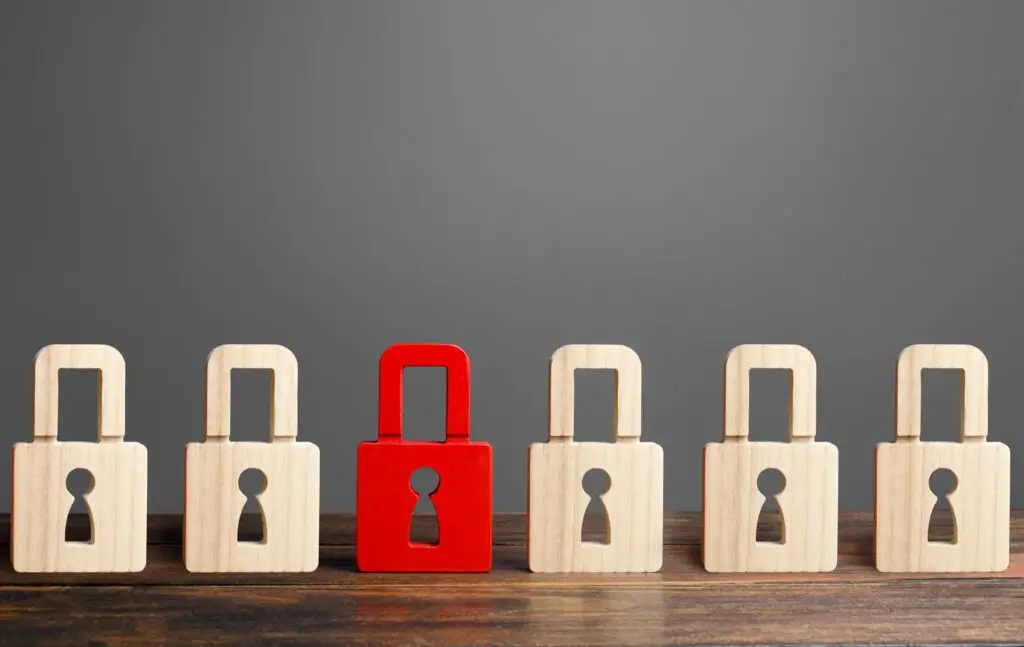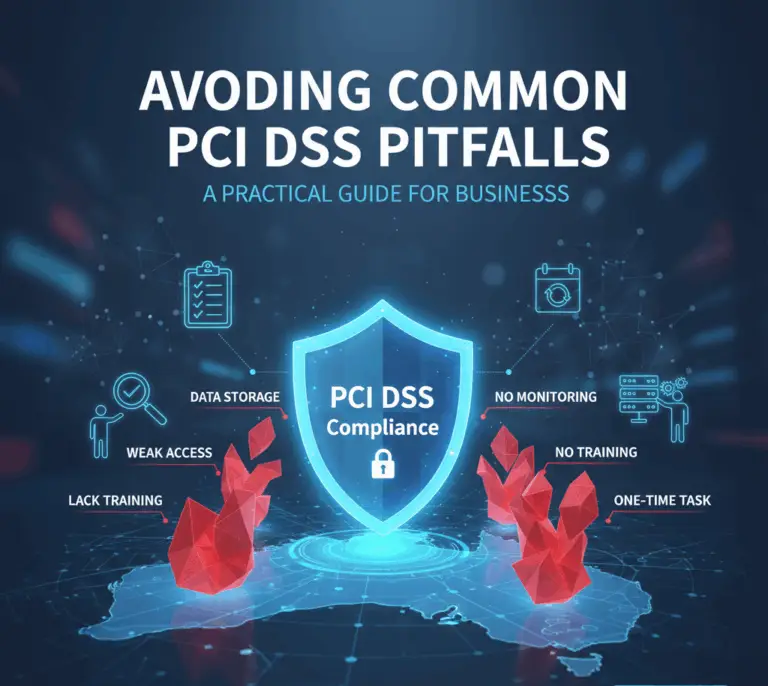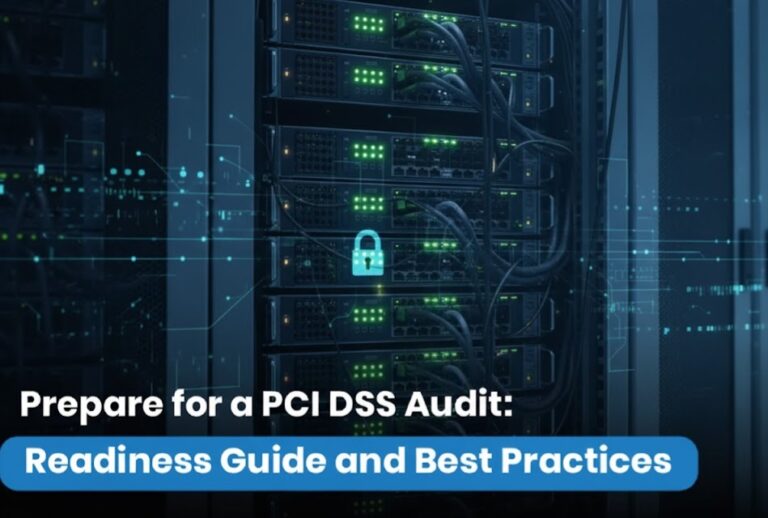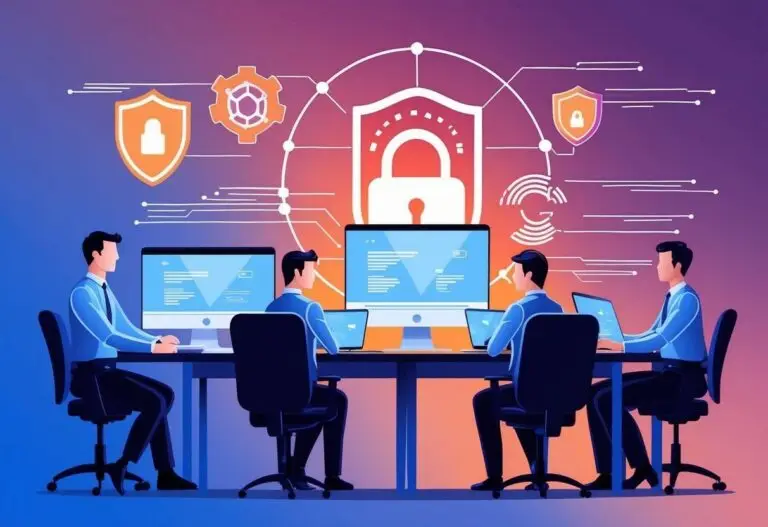PCI DSS Level 1 Service and Compliance Implementation
Achieving and maintaining PCI DSS compliance is not just an annual checkpoint—it’s a continuous effort that must be woven into the daily operations of an organization. For companies under a Level 1 PCI DSS service classification (the highest level of PCI DSS compliance), integrating security controls into business-as-usual (BAU) processes is especially critical. By incorporating PCI DSS requirements into routine activities, organizations ensure that data protection measures function correctly every day, not only during formal audits.
In this guide, we outline best practices for implementing PCI DSS into BAU processes. These practices cover assigning clear responsibility, continuous monitoring and metrics, proactive log reviews, swift incident response, rigorous change management, third-party oversight, periodic compliance reviews, effective communication, and technology updates. Following these guidelines will help your organization maintain a robust security posture and uphold Level 1 PCI DSS service compliance on an ongoing basis.
Implementing Level 1 PCI DSS service into your organization’s business-as-usual (BAU) processes is essential for maintaining ongoing compliance and safeguarding sensitive cardholder data. Businesses that integrate PCI DSS requirements into their daily operations ensure that security controls remain effective and properly functioning as part of their standard workflow.
Some PCI DSS requirements are designed to operate as BAU processes, continuously monitoring security controls to confirm their effectiveness. This proactive approach provides reasonable assurance that compliance is maintained between formal PCI DSS assessments. While the PCI DSS standard defines certain BAU requirements, organizations should adopt additional processes tailored to their unique environment for maximum security.
BAU processes help verify that both automated and manual controls are performing as expected. Whether a control is automated or manual, BAU activities should detect anomalies, generate alerts, and ensure timely remediation by responsible personnel.
Key Strategies for Incorporating Level 1 PCI DSS Compliance for Service into BAU Style
1. Assign Responsibility for PCI DSS Compliance
Assign a dedicated owner for PCI DSS compliance. Begin by designating an individual or a team with overall responsibility for PCI DSS compliance. High-level support is important: consider establishing a charter endorsed by executive management that outlines the PCI DSS compliance program’s objectives and the responsible parties. Clear accountability ensures that there is always someone monitoring compliance status, coordinating efforts across departments, and communicating progress to leadership. This governance structure embeds PCI DSS considerations into the company culture and daily decision-making.
2. Develop Performance Metrics and Continuous Monitoring.
Use performance metrics to track security control effectiveness. To keep PCI DSS controls effective day-to-day, define key performance indicators (KPIs) or metrics for your security measures. For example, you might track firewall uptime, number of blocked intrusion attempts, or time to apply critical patches. Regularly review these metrics to gauge whether security controls (such as firewalls, intrusion detection/prevention systems, change-detection tools, anti-malware software, and access controls) are operating as intended. Continuous monitoring of such controls is essential—real-time alerts and dashboards can help ensure that if a control deviates from expected performance, it’s noticed and addressed quickly. Over time, these metrics will highlight trends and help you adjust your strategies to continually meet Level 1 PCI DSS service requirements.
3. Review Logged Data Frequently and Analyze Trends
Proactively review logged data for anomalies. Don’t rely solely on automated alerts—schedule frequent reviews of security logs (system logs, application logs, network logs, etc.). Regular log review helps you identify patterns or behaviors that automated systems might overlook. For instance, you might notice an unusual increase in access attempts or subtle changes in user behavior that suggest a developing issue. By examining logs daily or weekly (as appropriate for your environment), you can spot trends or anomalies early and take action before they escalate. This proactive approach is part of making PCI DSS a BAU activity rather than a reactive task just for audits.
4. Respond Promptly to Security Control Failures
Ensure prompt detection and response to any control failures. Even with strong controls and monitoring, failures can happen—a firewall might go down or a security alert might be missed. It’s vital to have BAU processes that immediately detect these failures and trigger a response. Define a clear procedure for handling control failures, including the following steps:
- Restore the security control: For example, if a firewall or anti-malware system fails, reinstate it to proper working order as a top priority.
- Identify the cause of failure: Determine why the control failed—was it a misconfiguration, an expired license, a software bug, or human error?
- Address any security gaps during the failure: Assess whether the failure led to any security incidents or exposed vulnerabilities. If so, contain and remediate the issue (e.g., check if any unauthorized access occurred while the firewall was down).
- Implement preventive measures: Once you know the cause, take steps to prevent recurrence. This could involve process changes or technical fixes (for instance, applying patches, improving configurations, or providing additional staff training).
- Resume and enhance monitoring: After restoring the control, monitor it more closely for a period of time to ensure it’s functioning correctly and that your fix was effective.
By following these response steps as part of everyday operations, you minimize downtime and security exposure, thereby maintaining trust and compliance even when things go wrong.
5. Assess Risks Before Implementing Changes
Evaluate changes for potential security risks before implementation. Any significant IT or network change can impact your PCI DSS scope. Whether it’s adding a new system, altering a network segment, or updating configurations, integrate a PCI DSS compliance check into your change management process. Before completing the change, carry out a risk assessment that addresses questions like: Could this change bring new systems into the cardholder data environment (CDE)? Might it weaken existing controls or introduce new vulnerabilities?
Based on the assessment, take appropriate actions:
- Identify applicable PCI DSS requirements for affected systems: For example, if a new server will handle payment data, ensure it meets all relevant requirements (secure configurations, anti-malware, logging, etc.).
- Update the PCI DSS scope and controls: Modify your network diagrams, asset inventories, and scope documentation to include any new components. Implement any new security controls needed as a result of the change.
- Revise documentation and processes: Update network rulesets, data flow diagrams, procedure documents, and training materials to reflect the change. Make sure teams are aware of new responsibilities or checks introduced by the change.
By reviewing changes in advance, you prevent unpleasant surprises during your next audit and ensure continuous compliance, which is crucial for a Level 1 PCI DSS service organization.
6. Review Organizational Changes and Third-Party Access
Reevaluate PCI DSS scope when the organization undergoes big changes. Changes in organizational structure—like mergers, acquisitions, or corporate reorganizations—can affect your compliance efforts. New business units might introduce additional cardholder data environments, or different processes that need securing. As part of BAU, whenever such a structural change occurs, review how it impacts PCI DSS scope and requirements.
For instance, if your company acquires another company, their systems might now fall under your PCI DSS scope. You would need to: update your scope documentation, include those systems in your security program, ensure they meet PCI DSS standards, and possibly retrain personnel on compliance procedures. By addressing compliance during organizational changes, you maintain a seamless security posture across the expanded enterprise.
7. Ensure Secure Software Development Practices and Manage Third Party Access
Control external connections and verify vendor practices. Third parties (such as service providers, partners, or contractors) often have network access or handle sensitive data, which can introduce risks if not managed properly. BAU processes should include periodic reviews of all external connections and third-party access rights. Ensure that any connections from vendors or partners are still necessary and secure, and that these third parties follow your security policies (or equally robust ones). Disable or update access as roles or contracts change.
If you rely on third parties for software development or maintenance, make sure their development practices align with PCI DSS requirements (such as those in Requirement 6 for secure software development). This means verifying that they follow coding best practices, implement security testing, address vulnerabilities, and handle cardholder data appropriately. Regularly confirm that outsourced development teams are up-to-date on PCI DSS guidelines and that any software they deliver can meet your compliance standards. In contracts, consider including clauses that require adherence to PCI DSS and allow for security reviews or assessments of third-party processes. By managing third-party relationships closely, you reduce the chance that an external partner becomes the weak link in your security chain.
Perform regular self-audits to ensure controls remain in place. Don’t wait for the annual assessment to check that everything is in order. Make periodic reviews (e.g., quarterly or monthly) a part of normal operations. These reviews should verify that all PCI DSS controls are functioning and that staff are following security procedures consistently across all facilities (headquarters, branch offices, retail locations, data centers, etc., including those managed by third-party service providers).
During these reviews, you might: confirm system configuration standards are still applied, check that default vendor passwords on new systems are removed, ensure patches and antivirus definitions are up to date, verify that logging and audit trails are active and reviewed, and confirm that access controls are working as intended. Essentially, treat these like mini-assessments to catch any lapses in compliance. The frequency of these reviews can depend on your organization’s size and complexity, but the key is regularity and thoroughness.
Maintain evidence for assessments: As part of your reviews, ensure you are collecting and retaining evidence of compliance activities. This includes items like audit log records, vulnerability scan results, firewall and antivirus logs, user access reviews, and incident response reports. Keeping this evidence organized and readily available will make your formal PCI DSS audit (whether internal or with an external Qualified Security Assessor) much smoother. It also helps demonstrate that your PCI DSS controls have been in effect continuously, which is a critical aspect of sustaining a
Level 1 PCI DSS service compliance status.
9. Communicate Threats and Changes Effectively to Stakeholders
Keep everyone informed about emerging threats and updates. Effective security is a team effort that extends beyond just the IT or security department. Establish communication channels to promptly inform all relevant internal teams—and even external partners, when appropriate about newly identified security threats, vulnerabilities, or significant changes in the PCI DSS program. These communications might take the form of security bulletins, email alerts, or regular meetings.
When communicating, explain the impact of a threat or change in clear terms, describe what actions are being taken or need to be taken (for example, “All employees must apply a particular security patch by Friday” or “We have updated our password policy; here’s what’s new”), and provide contact points for questions or incident reporting. By keeping staff and partners in the loop, you ensure that everyone can act quickly and correctly in response to issues, and you reinforce a culture of security awareness. Well-informed employees are more likely to follow policies and notice/report unusual activities, all of which helps maintain PCI DSS compliance as a living process.
10. Regularly Review and Update Technologies
Ensure your security technology is current and supported. Over time, hardware and software that were once secure can become outdated or unsupported by vendors—meaning they may no longer receive security patches or meet modern security standards. As a BAU practice, review your critical technologies (systems, devices, applications involved in processing or protecting cardholder data) at least annually to confirm they’re still supported and effective.
If a technology is reaching end-of-life or no longer meets your security needs, plan for an upgrade or replacement before it becomes a compliance gap. For example, if your firewall vendor will stop supporting your model next year, start budgeting and scheduling a replacement now rather than waiting until it’s a scramble. Likewise, if an operating system in your cardholder environment won’t support the latest encryption protocols, work on migrating to a newer version. Regular technology refresh cycles ensure that your infrastructure can continuously support PCI DSS requirements. This proactive approach helps avoid last-minute fixes and ensures that your security controls remain strong and up-to-date, which is indispensable for sustaining a Level 1 PCI DSS service level of security.
Conclusion: Sustaining PCI DSS Compliance in Everyday Operations
Integrating PCI DSS best practices into business-as-usual processes is the key to sustaining compliance, especially for organizations that must uphold a Level 1 PCI DSS service compliance status. By assigning clear responsibility, continuously monitoring and measuring security controls, proactively reviewing logs, responding swiftly to issues, carefully managing changes, overseeing third parties, conducting regular self-assessments, communicating effectively, and keeping technology current, you create a robust environment where security and compliance are part of the DNA of the business. This not only helps you ace your PCI DSS audits with confidence, but more importantly; “protects your customers’ sensitive data” every single day.
Embracing these BAU practices means PCI DSS compliance is no longer a once-a-year project, but an ongoing commitment to security excellence. This approach ultimately reduces risk, builds trust with customers and partners, and ensures that your organization remains secure and compliant in the face of evolving threats and business changes.
If your business handles a high volume of cardholder data, partnering with a Level 1 PCI DSS service provider like a Qualified Security Assessor (QSA) ensures you maintain robust compliance and top-notch security. A QSA is an expert certified by the PCI Security Standards Council to guide Level 1 merchants and service providers through the complexities of PCI DSS. Key benefits of working with a QSA include:
- Expert PCI DSS Guidance: QSAs have in-depth knowledge of all PCI DSS requirements. They provide tailored advice and compliance strategies to meet the specific needs of your business, ensuring you fulfill every standard expected of a Level 1 organization. With a QSA’s guidance, you can confidently navigate audits and reduce the risk of compliance gaps.
- Continuous Security Monitoring: Leading QSA firms offer advanced monitoring tools and continuous oversight of your cardholder data environment. This proactive approach means potential vulnerabilities or suspicious activities are detected early. By keeping a 24/7 watch on your systems, a QSA helps prevent breaches and ensures your environment stays secure year-round.
- BAU Integration of Compliance: A QSA helps integrate PCI DSS controls into your day-to-day operations, also known as business-as-usual (BAU) processes. Instead of treating compliance as a one-time annual project, QSAs work with you to make security practices a natural part of your daily workflow. This continuous integration ensures that compliance is maintained throughout the year and that any changes in your environment (like new systems or process updates) immediately adhere to PCI DSS standards.
By partnering with a Qualified Security Assessor as your Level 1 PCI DSS service provider, you gain a trusted advisor dedicated to keeping your business secure. This collaboration not only prepares you for annual audits but also strengthens your overall security posture on an ongoing basis. In short, choosing a QSA means peace of mind that your company’s cardholder data is protected every day, making it an invaluable partnership for any high-volume merchant or service provider striving for the highest level of PCI DSS compliance.



